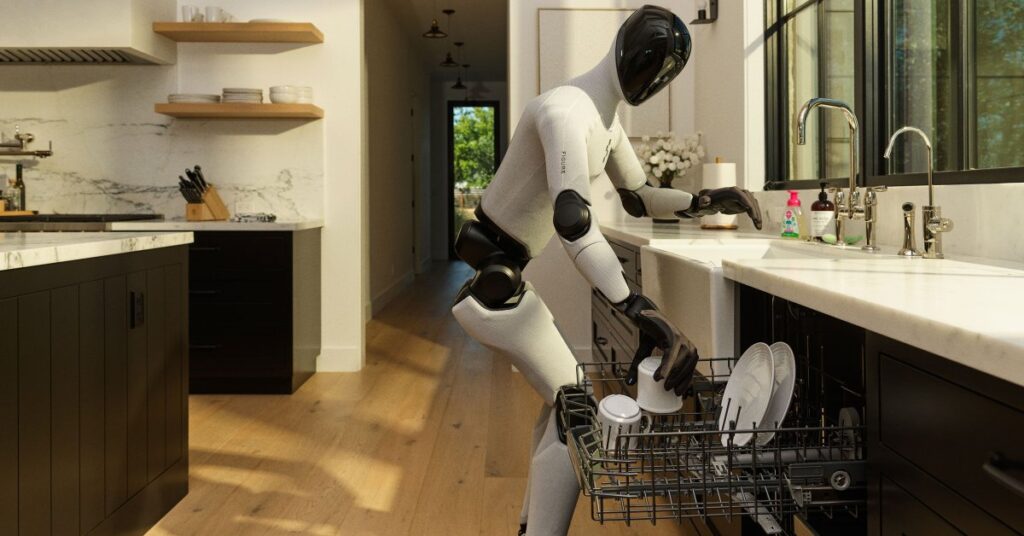That same year, Adcock met with two trusted lieutenants in his basement. He described to them an idea to start a humanoid robotics company. “He was like: I think it could be the biggest market in the world,” says Logan Berkowitz, Figure’s vice president of business operations, who attended the meeting along with Randaccio, to whom he is married. “He was looking at the labor statistics and I think his mind was exploding,” Berkowitz says. “Like, ‘holy cow, if we can tap this market, this is a trillion dollar company.’”
Within a year of Figure’s founding, the company had built a hulking silver robot with exposed wires—the Figure 01. A year after that, they had built the sleeker Figure 02. From the beginning, the company paid close attention to producing glossy videos of its robots to be shared with prospective investors and on social media. An early video shows the Figure 01 walking by itself, accompanied by an electronic dance music soundtrack. In June of this year, the company uploaded an hour-long unedited video of the Figure 02 sorting packages on a conveyer belt. And a week before my visit, they posted a video of the Figure 02 successfully folding five towels in a row. Videos are commonly used in the robotics industry to generate hype — but they are less useful as a barometer of a robot’s abilities. “One thing you learn in robotics,” says Hans Peter Brondmo, a former vice president at Google’s Everyday Robot project, “is to never trust a YouTube video.” Adcock is scornful of competitors, some of whom he says secretly use remotely controlled robots in demonstrations. Figure, he says, never does that.
Read the full article here


